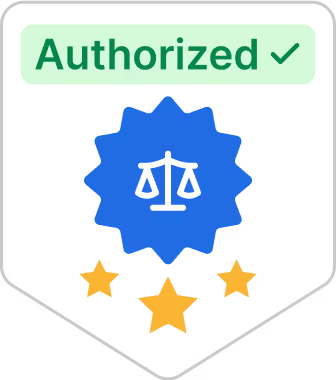Name Change After Divorce

After going through a divorce, many people want to change their last names back to what they were before their marriage occurred. If you’re one of them, you may be wondering what the legal name change process entails.
The laws for name changes can vary slightly from state to state. However, there are a few key steps that you’ll likely need to take.
#1 Get Your Name Change After Divorce Approved By The Court
Before you can start updating your identification cards and personal records, you need to make your name change official with the court. To ensure all petitions are approved, make sure to follow this name change checklist:
- Include a name change request within your divorce decree – If you haven’t finalized your divorce process yet, changing your name is easy. You just need to request to have your name change included in your divorce decree. Including your name change in your divorce decree can save you time and money, since you won’t need to pay any additional filing fees. Better yet, you can start using your maiden name as soon as your divorce is finalized, allowing you to enjoy a fresh start right away.
- Request an amendment to your divorce decree – If you’re already divorced, some states allow you to ask the court to amend your divorce decree so it includes the name change order too.1
- File a petition to change your last name – If you’re unable to amend your divorce decree, you can change your name by filing a name change petition with the court. During this process, you may have to show the required documents, such as an official photo identification and your Social Security number (SSN). Unfortunately, this method can involve a little more paperwork. That’s because you may have to go through an FBI background check and have your fingerprints taken. These steps are required to make sure that your name change is not for illegal or fraudulent purposes. You may also have to pay some filing fees.
- Go back to using your maiden name – In some states, the process for changing your name after divorce is much more streamlined—you simply start using your former name consistently again. You don’t have to file any paperwork. Just keep in mind that this method may not be adequate if you fly or need to obtain an updated passport.
#2 Change Your Name With the Social Security Administration (SSA)
Once your name is legally changed, you can update any organizations that still have your married name on file. One of the most important organizations to update is the SSA.
To get a new SSN card with your updated name post-divorce process, you must:2
- Fill out an application for a new Social Security card
- Present a certified copy of your divorce decree or name change court order
- Provide proof of your U.S. citizenship or residency
- Verify your age and identity
To make this step quick and easy, consider an all-in-one platform that helps you manage and update government forms. Once you’ve completed these steps, you’ll be sent your new Social Security card in the mail.
#3 Update The Rest of Your Personal Records and Identification
Next, you may want to update your driver’s license and passport. You can have these documents changed by contacting your local DMV and the U.S. Department of State, respectively. You may need to show them your divorce decree or name change order from the court, as well as a birth certificate, passport, or driver’s license from before you were married.
It’s also important to update the following institutions about your name change:
- Banks
- Lenders
- Insurance providers
- Utility providers
- Phone companies
- Employers
What about Changing My Kids’ Names Post-Divorce?
One reason why some divorced couples decide to keep the same last name is that they have kids together. Sharing the same last name as your children can make life simpler, especially while they’re still in school.
So, what if you want to change your kid’s last name too? If so, you can file a name change petition for your child. During the court proceedings, the judge will determine if a name change is in the best interest of your child using the following information:
- Your child’s age
- The length of time that your child has used their current last name
- How strong your child’s relationship is with each parent
- The potential pros and cons of changing their name
- Your child’s wishes
Ultimately, the name change decision will be up to the discretion of the court. Just keep in mind that changing your child’s name won’t have any effect on you or your ex-spouse’s visitation rights, child support responsibilities, or ability to leave your child an inheritance. For more information on how to change your child’s last name, make sure to check out our resource center to get the appropriate help you need.
Simplify The Name Change Process With GOV+
Divorces can be draining. The last thing you need is to navigate the name change process alone. Luckily, you don’t have to. GOV+ can simplify your name change request so you can seamlessly step into your next chapter.
Sources:
1. California Courts. Change your name in your divorce case. https://selfhelp.courts.ca.gov/name-change/divorce
2. FindLaw. Changing Your Name After Divorce: FAQ. https://www.findlaw.com/family/divorce/changing-your-name-after-divorce.html























